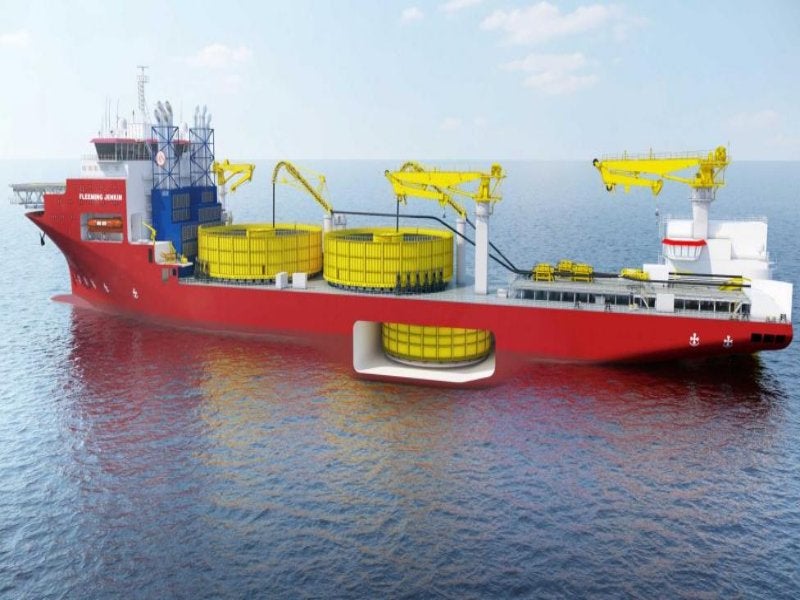
Maritime services provider Jan De Nul Group has placed an order for the construction of the Fleeming Jenkin, an extra-large cable-laying vessel. The vessel will be built at China’s CMHI Haimen shipyard.
Boasting an unparalleled cable-carrying capacity of 28,000 tonnes, the vessel will play a pivotal role in the renewable energy and subsea cable sectors, facilitating the installation of cables across extended distances and in deeper maritime territories.
The expected delivery date for the vessel is set for 2026.
Jan De Nul Group Offshore Energy Division director Philippe Hutse: “We stand firm in our belief in the energy transition. Following our previous investments in the jack-up vessel Voltaire and crane vessel Les Alizés for the installation of the next-gen wind turbines and their foundations, we now proceed with this magnificent cable-laying vessel.
“Thanks to her unprecedented capabilities, Fleeming Jenkin will be a perfect fit for the interconnector and export cable markets.”
As offshore wind farms extend deeper into the ocean and reach further offshore, the need for enhanced interconnectivity between countries and regions becomes increasingly critical for economic stability and energy security. In both these markets, there is a growing demand for cables that are longer, more robust, and capable of withstanding greater depths in the ocean.
To address this need, Jan De Nul is committed to making substantial investments in both installation assets and human resources, thereby strengthening its ability to cater to the evolving requirements of the offshore energy industry.
Jan De Nul’s offshore installation fleet comprises a formidable array of vessels, including four high-capacity cable-laying vessels, along with two offshore jack-up installation vessels, three floating crane installation vessels, five rock installation vessels, and two versatile multipurpose vessels.
Jan De Nul has already initiated an extensive recruitment drive to expand its crew and staff members, specifically for the operation of the Fleeming Jenkin. These recruits will undergo comprehensive in-house training to prepare them for their roles within the company.
This team will be a multidisciplinary force, encompassing dynamic positioning officers, engineering technicians, tensioner carrousel operators, cable-laying superintendents, as well as various specialised offshore technicians and engineers specialising in civil and mechanical engineering.
Named after electrical and cable engineer Henry Charles Fleeming Jenkin, the vessel will be outfitted with three cable carousels and a spacious hold designed for fibre optic cables. This vessel will have the capability to lay up to four cables simultaneously. Two of these carousels are situated on the deck, while the third is located below deck. The combined cable-carrying capacity of this vessel is 28,000 tonnes, which is twice the capacity of any other cable-laying vessel available in the market.
The vessel will be engineered to handle water depths of up to 3,000m and cable tensions of up to 150 tonnes, making it ideal for installing longer and heavier cables in ultra-deep waters.
Additionally, the vessel will be equipped with a DP2 (Dynamic Positioning 2) system, enabling it to operate with stability in both deep and shallow waters. This is further enhanced by the inclusion of an additional third bow thruster.
Fleeming Jenkin will feature a cutting-edge dual exhaust filtration system that can achieve an 99% reduction in nanoparticle emissions. This system employs a Diesel Particulate Filter (DPF) and a Selective Catalytic Reduction (SCR) system to effectively eliminate harmful pollutants, particularly nitrogen oxides (NOx), from its emissions.
Thanks to a groundbreaking ULEv system, Fleeming Jenkin fully aligns with the stringent European Stage V emission standards for inland waterway vessels.
The vessel will be powered by engines that can run on biofuel and green methanol.


